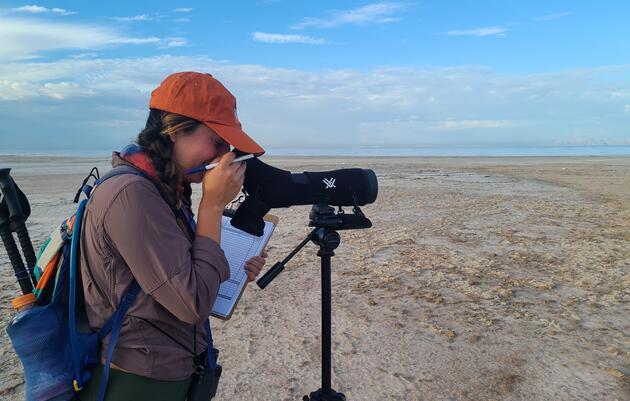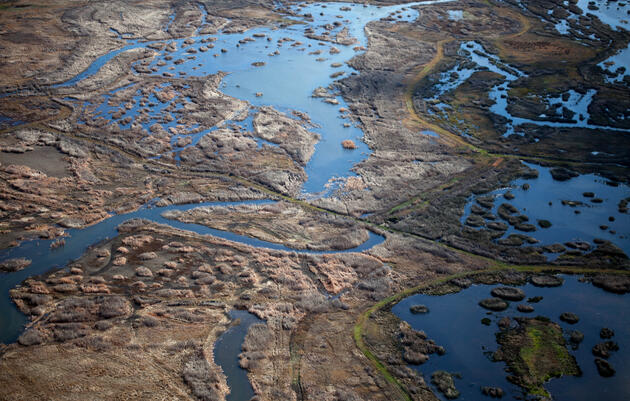This week, California Governor Gavin Newsom announced his 2024 budget proposal. Despite speculation of a $68 billion budget deficit, the Governor’s budget accounts for a significantly smaller, yet still challenging budget deficit of approximately $39 billion. To address the deficit, Governor Newsom’s budget includes cuts (or “reversions”) to many important programs, including a $2.9 billion reduction in climate-related programs, in addition to $1.9 billion in delays of expenditures to future years.
These cuts to environmental and climate programs, such as Regional Climate Resilience and Redondo Beach Wetlands Restoration, underscore the urgent need for different funding sources in conserving California’s critical biodiversity.
Proposed Budget Cuts and Reversions
Governor Newsom’s proposed budget includes significant cuts to various programs that fund wildlife and climate resilience, including:
-
Cuts (otherwise known as decreases in the amount of funding allocated to specific programs, initiatives, or expenditures) $1.4 billion in investments over multiple years to support drought resilience.
-
Reverts (otherwise known as returning funds back to the original account or fund they were allocated from) $88.4 million and cuts $350 million over the next two years for various watershed climate resilience programs.
-
Reverts $15 million for two nature-based solutions programs, Redondo Beach Wetlands Restoration & Resource Conservation Investments Strategies.
-
Cuts $40.1 million for the Extreme Heat and Community Resilience Program.
-
Cuts $50 million for the Regional Climate Resilience Program at the Office of Planning & Research.
-
Reverts $5 million for the Climate Adaptation and Resilience Planning Grants at the Office of Planning & Research.
-
Reverts $220.9 million for Sea Level Rise activities back to the General Fund.
-
Reverts $171.1 million for Coastal Protection & Adaptation activities back to the General Fund.
-
Reverts $35 million for Ocean Protection funding back to the General Fund.
We are pleased to see that despite extensive cuts and reversions, the proposed budget includes $65.2 million for the Salton Sea Management Program, a key Audubon California funding priority.
Historically, California has prioritized other needs over the environment. The prioritization of agricultural and urban development has led to the loss of 95% of the state’s historic wetlands and significant ongoing losses in native habitats. As a result, many bird populations in California have declined significantly.
Creating an equitable, prudent state budget is always a challenge, particularly as the state faces the second year of significant deficits and potentially several more years of fiscal restraint. Essential programs to serve Californians, especially vulnerable communities, need to be maintained.
At the same time, if California and its leadership are committed to protecting birds and other wildlife, reliable funding mechanisms for conservation and climate resilience programs must be found. While solutions such as the proposed climate and water bonds can provide years of funding, California’s leadership must also take full advantage of budget surplus years and find new funding mechanisms to pay for the projects necessary to close the gap in conservation investments necessary to harness a greener future.
Audubon California's Support for a Climate Bond
Faced with limited resources to conserve the state’s biodiversity and protect against climate change impacts, a climate bond remains essential.
Audubon California remains steadfast in its support of a $15 billion bond to fund necessary climate investments, benefitting both people and birds, including but not limited to:
-
Expanding access to nature and its benefits for everyone.
-
Protecting water supplies in the places birds and communities need it most.
-
Investments in our state’s natural and working lands to sequester carbon, reduce emissions, and build resilience to climate change.
-
Restoring the Salton Sea.
-
Siting renewable energy projects on land and in the ocean to reduce impacts to birds, other wildlife, and communities.
-
Conserving 30% of California’s lands and waters.
Advocacy and Next Steps
Over the course of 2024, Audubon California will be engaged in state and federal advocacy for the above priorities. In May 2024, the May Revision will be released, and over the following months, the legislature and Governor’s administration will work together to formulate a state budget reflective of California’s priorities.
Audubon California looks forward to making strides in conserving California’s birds and their habitats while enhancing the state’s resilience to climate change. Stay up-to-date on our progress by signing up for our newsletter. You'll get email updates about our advocacy and conservation work and be the first to hear about opportunities to help birds in California.






